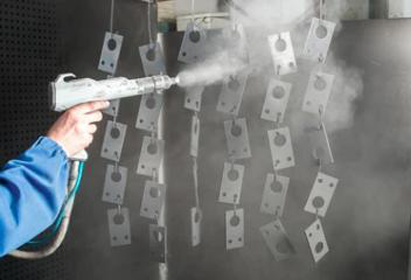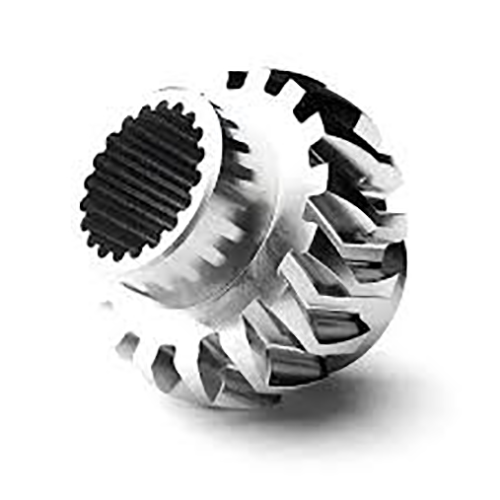
Delivering appointed top-layer smoothness for a manufactured item is critical.
- Technical drawings lay out precise surface criteria for components
- Drawings commonly cite Ra, meaning root mean square average, to measure texture
- Decoding surface notes is important for ensuring components achieve required performance
- Specified roughness affects lubricant distribution, frictional performance, and durability
- Correctly reading the finish notation is necessary to attain the intended result
CNC Machining: A Definition of Precision

CNC machining is a transformative approach within manufacturing by leveraging computer-aided programs machines execute intricate designs with remarkable accuracy.
- The technology facilitates production of complex parts across many materials
- The versatility of CNC machining makes it ideal for aerospace, automotive, medical, and electronics
- Computerized machining yields consistent replication of parts in series production
From concept models to high-volume manufacturing CNC machining anchors industrial production
CNC Spec Interpretation
Reading machine specs may appear overwhelming initially
Still a modest foundation of know-how combined with structure allows navigating specs
Launch by determining central specs: spindle rpm, feed velocity, accuracy, envelope, controller
All attributes together shape the system’s production performance.
Example: increased spindle revolutions aid soft materials; accelerated feed raises production.
Comprehending those interactions assists in picking the proper CNC for tasks
Ensure you peruse vendor documentation exhaustively.
Those resources usually offer helpful explanations and clarify jargon
Understanding CNC Machines: A Complete Overview
CNC machines are specialized computer-controlled systems used in manufacturing for precise and automated fabrication of various materials They function by reading numerical G-code commands that drive cutting heads and actuators.
- Several forms of CNC equipment are mills, lathes, routers, plasma cutters
- CNC machining processes are highly versatile and can be used to work with a wide range of materials including metals plastics wood and composites
- In addition these machines facilitate quick prototyping and short-run manufacturing for startups and labs
Core Concepts of CNC Machinery
They embody an integration of hardware accuracy and advanced software regulation Automated tools implement code to produce elementary parts and sophisticated assemblies The fundamental principle behind CNC machines is the translation of digital designs into physical forms.
- Computer Numerical Control machining
- Software-guided fabrication
It entails finely timed actuator motions governed by software Shop technicians tune machining parameters, supervise production, and certify product accuracy.
Surface Finish's Importance in CNC Machining
Delivering planned surface condition during machining is necessary It shapes both functional outcomes and outward appearance The type of material being machined the cutting parameters used and the post-processing operations all contribute to the achieved surface texture.
Fine finishes raise resilience whereas rough profiles can restrict performance CNC workflows include varied tooling and approaches to produce intended surface results.
- By using distinct cutter geometries |diamond tooling|cutting speeds to achieve a desired surface finish
- In addition buffing, grinding, and sanding may be applied to upgrade finishes
Seeing how process parameters map to surface output is key for optimal finishes.
Introduction to CNC Machining
A precise fabrication technique, it applies computer-controlled machines to produce parts from assorted materials They adhere to programmed code to reproduce complex geometries with repeatable accuracy Awareness of G-code, tooling, and machine operation aids successful production
CNC applications stretch across aerospace, automotive, medical device, and electronics industries From fine aerospace pieces to intricate mold geometries, CNC underpins complex manufacturing
Notation for Surface Finish on Machined Parts
Precise surface specification proves essential in CNC machining It verifies compliance with intended functional and aesthetic goals Technical callouts frequently employ Ra as the roughness metric Noted in microns or millimeters, the value quantifies average texture height.
Consider needed smoothness and the part’s application to determine finish requirements

In practice smoother finishes help where exact fits and close tolerances are essential
By contrast coarser finishes may be useful where additional grip or friction is desirable
Use explicit finish instructions on design documents to convey the surface requirement Provide the roughness average and detail supplemental processes or treatments needed.
Recall that well-defined roughness notes help ensure production success
Kinds of CNC Machines and Their Strengths
The world of CNC machining is vast and diverse with a wide array of machines designed to tackle various types of tasks These versatile tools utilize computer-aided design (CAD) software to control cutting tools enabling precise and efficient fabrication of components.
- Drills bore precise holes with controlled feed and speed
- Profiling routers cut complex outlines usually in softer materials
- Plasma cutters employ ionized gas arcs to sever metal quickly and accurately
Machine selection is dictated by workpiece material, geometric complexity, and precision demands Every machine class brings specific strengths that serve sectors like aerospace and automotive.
Achieving Premium Surface Results in CNC Processes
Producing a high-quality finish matters across manufacturing and CNC approaches provide precise control to reach it Through careful tuning of feeds speeds and tool profiles operators manage chip formation and surface generation In addition top-grade tooling and adequate lubrication help generate finer surfaces Deliberate machining strategies and exact setups enable production of components with excellent texture.
CNC Programming to Achieve Surface Quality
Managing finish via CNC code is important to secure required surface properties Feed selection spindle rpm and cutter geometry collectively determine texture outcomes Exact parameter choices plus proper fluid management achieve refined finishes.
- Also cnc machine definition ongoing tool care and inspection support sustained finish reliability Plus regular inspection and maintenance of tools copyright finishing standards Continuous tool maintenance and oversight preserve high finish consistency
- To optimize surface finish programmers should consider factors like material type desired surface roughness and the application requirements
- Virtual simulation provides a way to optimize feeds and speeds before cutting
- Moreover scheduled tool maintenance and inspection preserve surface performance
